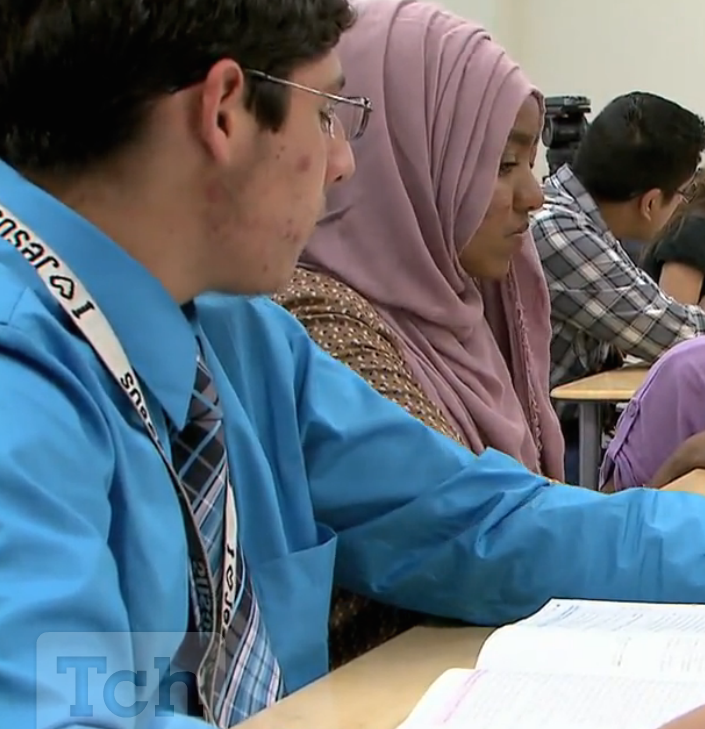Capitalizing on Cultural Backgrounds
1. Language Used for Social Interaction Versus Language Used for Academic Learning

Understanding Social Language and Academic Language
There is a distinction between language used for basic social interaction, and language used for academic purposes.
- Basic Interpersonal Communication Skills (BICS) are language skills needed for social conversation purposes, that is they can speak English well enough to interact with their peers, talk on the telephone, and negotiate meanings with adults.
- Cognitive Academic Language Proficiency (CALP) refers to formal language skills, including listening, speaking, reading, and writing, used for academic learning. Cognitive Academic Language Proficiency refers to the ability to demonstrate academic competence in the new language orally and in writing at a level commensurate with that of their native-speaking peers. For students with no prior schooling and no primary language support (i.e. neither the student nor members of their family have attended school in their native language) may take as much as seven to ten years to acquire academic skills in their new language. (Thomas & Collier, 2002). In other words, newcomers may need substantial time and educational support to develop English skills necessary for success in school.
In addition to mastery of academic English language terms and sentence constructs, academic language use, whether oral or written, requires a growing reservoir of background knowledge pertinent to any given discipline, along with knowledge of the conventions and structures of oral and written English.
Equally important for students new to English is explicit instruction in socially and culturally appropriate ways of using English, oral and written. At the primary levels, socialization of children into the conventions of sharing, saying “please” and “thank you” is a normal part of the curriculum. It is also a part of our cultural norms. At the upper grade levels, teachers assume that these culturally appropriate speech patterns and behaviors have already been learned. It is frequently assumed that the rules of classroom behavior such as taking turns, talking, listening, and responding to other students and the teacher in appropriate ways have also been learned in the earlier grades. None of these social/cultural conventions can be taken for granted with respect to the English Language learner.
Many teachers and stakeholders make the often logical mistake of placing ELLs into more advanced classes before they are ready. Because they may have a good foundation and making good progress in social language, and the younger they are the more native-like they may sound), it is easily perceived that the students may know more English than they actually do. Although learners might be accomplished speakers and sound native-like, academically they might be years behind native speakers. this lag may be explained by weak or interrupted schooling in the home country, or by months of non-comprehensible academic instruction delivered in English, or a combination of both (Freeman, Freeman, & Mercuri, 2002).
Cummins (1981, 1982) analyzed the standardized test scores of ELLs and compared them to native English speakers. He found that, while the ELLS could acquire a social language rapidly, generally within two years, it took five to seven to acquire academic language. Compound this with a child who speaks with no foreign accent, they can be easily confused as proficient. When a student has strong academic knowledge in a first language, it can be transferred to the second language. When a student has a strong foundation in a native language, ti is assumed that the transfer to the second is more a question of language than of knowledge learning. Thus it is understandable that a child who learns to read in his or her native language first, regardless of the native language, understands the concept of reading. Therefore in ELL reading class, the concept of deciphering print is already understood; only the new language must be learned. Cummin's idea of Common Underlying Proficiency explains why an international high school student with strong academic background from the native country might fare better academically in an American school than in a second language learner who was brought up in the United States.
The time required for students to acquire social language is up to two years, and academic language five to ten years - this is a great difference, and it can have a profound effect on academic achievement (Cummins, 1981a, 1982). Students arriving in the United States with limited or interrupted education will have a much more difficult time catching up to their English-speaking peers academically.